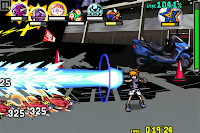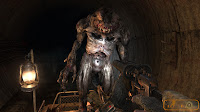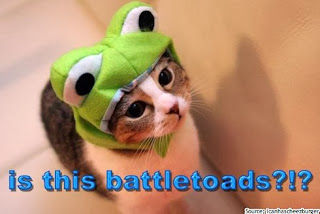 Opinion by Shaan J.
Opinion by Shaan J.
I love dying in games.
It’s tough to nail down the exact reason though. I didn’t grow up spending much time on the 8 and 16-bit consoles, so the term “NES-hard” never really resonated with me. Those games that I did play were games where death was a minimal part of the experience, a (somewhat) ineffective deterrent to poor play. And then in modern games death is typically a minor part of the experience indeed; sure, while running out of lives might have carried some weight in the old-school Mario games, lives are virtually meaningless in Mario’s modern exploits, and they often feel included for the sake of tradition.
But there’s been a bit of a resistance to this trend for games to become “easier.” Turning the difficulty up to Veteran in a typical shooter might still not mean that much, but we only need to point to the resurgence of the roguelike genre amongst certain circles to see that there’s an appetite still for truly difficult games.
Artificial Stupidity
As sad as it may be, a large majority of mainstream games handle difficulty in the same way. For games where you choose a preset difficulty when you start playing, most of the challenge (if we want to call it that) comes from artificially making the game harder by making the most minor of changes. From increasing enemy health, accuracy, or damage, to limiting the actions of the player, this is the most simple form of ratcheting up the difficulty, and in almost all cases, these changes end up ruining the game.
This should come as no surprise of course, since you’ve probably played a game that has pulled this exact same trick before. I don’t mean to rag on the genre as a whole (I’m actually a fan of it), but shooters tend to fall back on this more often than not. And some of the best games out there are guilty of this as well. Both GoldenEye and Perfect Dark (which are widely regarded as some of the best games of all time) fall prey to this; sure, the game throws more objectives at you on higher difficulty settings and this is a nice touch, but the unfair increase in enemy power nearly ruins the game as a whole.
And as sad as it is, this still happens to date. I just worked my way through two different military blockbuster shooters (Battlefield 4 and Call of Duty: Ghosts), and while the single-players campaigns were enjoyable enough on a moderate difficulty, the highest settings completely changed the way I played, and for the worse. Instead of actively trying to strategise and flank my enemy, I was forced to hide behind cover, wait until the opposing forces were reloading, and then pop off a few shots of my own before hunkering back down. Rinse and repeat.
You might be thinking that I’m overexaggerating, especially when these two games mainly focus on their multiplayer modes, but it’s a shame to see games that fail to capitalise on their potential. Take Battlefield for example, a game that prides itself on its highly destructible environments. Instead of simply making bullets more deadly, the developers could make changes to the AI – maybe have enemies focus on destroying my cover more often, forcing me to constantly move and not stay crouched in one position. But, like with most big-budget titles, the game is designed around catering to the widest audience possible, and adaptive AI is hardly the priority for most developers. Luckily, we have indie and niche games to fill that role.
While we’ve all played through our fair share of titles that are downright cheap or unfair, there are plenty of games out there that put an emphasis on designed difficulty; that is to say that the idea of providing players with a challenge is itself part of the game and its mechanics, rather than an afterthought that was brought about by fiddling with a few lines of code.
There are plenty of ways to accomplish this of course, and each game does it differently. Entire genres, like the roguelike, are focused with providing the player with extremely difficult and deadly environments to navigate, and enemies to defeat. Death is to be embraced from the get go, and while players will die often, a good roguelike (or a good game for that matter) doesn’t rob players of their progress without providing a lesson, or some knowledge on how to better tackle things in the future.
Still, there will always be games that derive their difficulty from demanding a high level of skill from the player, and these games can be divisive to say the least. While this doesn’t apply to every game out there, most games either require the player to employ and develop strategy in order to advance, or have a high level of raw skill to overcome an obstacle (twitch gameplay in shooters, for example). Everybody has their limitations of course, but when taking into account factors such as age and experience with gaming, its often more effective to ask a player to evolve their thought process, rather than simply “get better” at playing a game through sheer dexterity.
Finding Your Style
If you’ve typically shied away from games that are known for being challenging or difficult, I can’t entirely blame you. After all, people play games for different reasons, and sometimes, challenging or complex gameplay isn’t necessarily everyone’s cup of tea.
Still, if you’re looking to diversify your gaming portfolio, or if you’re just in the mood for a game that’s challenging, but fair, check out the list below. There are plenty of different genres and styles of games represented, so chances are you’ll find something up your alley.










Those are just a handful of games that provide a genuine level of challenge. What are some other games that you can think of that come to your mind?
– Shaan J.
Contributor
Follow me on Twitter @KneehighPark







